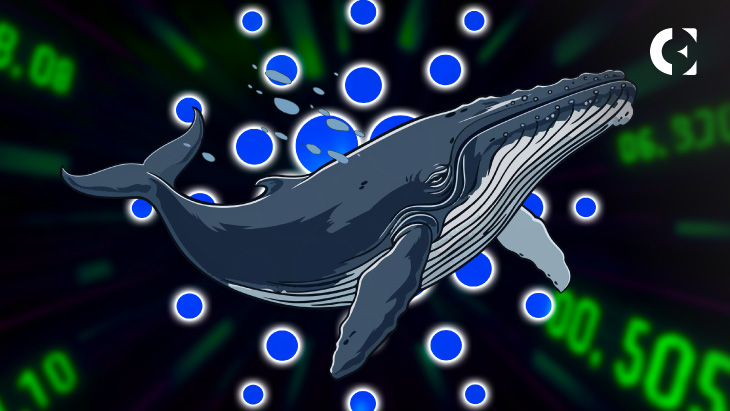- Cardano Whale argues ADA’s consistent top 10 position since 2017 proves its resilience.
- He contrasts Cardano’s public distribution with VC-backed artificial supply constraints.
- Cardano Whale criticizes the “new is always better” mentality while highlighting organic demand.
Altcoin Daily’s question “Anyone here still believe in Cardano?” has sparked a detailed defense from prominent community member Cardano Whale. He argued that ADA’s sustained top 10 position since 2017 shows genuine market resilience rarely matched by newer projects.
Cardano Whale emphasized that only Bitcoin, Ethereum, and XRP share similar longevity records in the top 10, which positions ADA among cryptocurrency’s most enduring projects.
“Cardano has been in the top 10 basically uninterrupted since its inception in 2017. The only other chains with a similar track record are Bitcoin, Ethereum, and XRP. No small feat,” the Cardano Whale states, contrasting this persistence with dozens of failed projects, including EOS, BSV, IOTA, and Terra Luna.
Organic Demand Versus Artificial Constraints
The defense highlights fundamental differences between Cardano’s market structure and those of newer, VC-backed chains. Cardano Whale argues that ADA trades on genuine supply and demand dynamics. He also mentioned that the majority of coins have been publicly available since their inception, unlike projects with artificially constrained supplies controlled by insiders.
This organic distribution model contrasts sharply with venture capital-funded projects that maintain high valuations through limited token release schedules and artificial market maker demand. The analysis suggests this creates more sustainable price discovery for Cardano compared to projects with heavily manipulated tokenomics.
“Cardano is here on organic supply/demand with the majority of its coins trading publicly since inception, which is very different from VC chains, which are mostly high on artificially constrained supply,” Cardano Whale explains. Looking forward, he identifies UTxO-based decentralized finance as a key catalyst for future growth.
The analysis positions Cardano as the largest decentralized self-governed blockchain. He also predicted that this would become a major narrative over the next decade. Unlike centralized chains or those controlled by venture capital interests, Cardano’s governance structure allows genuine community participation in decision-making.
Challenging the “New Is Always Better” Crypto Mindset
Cardano Whale’s response challenges the “new is always better” mentality pervading cryptocurrency markets. He argues this mindset guides investors in the wrong direction. With top 10 market caps now starting at around $20 billion, new projects face increasingly difficult barriers to entry, despite attempts at manipulation.
Related: Cardano: Input Output and Leading Community Token $SNEK Announce Collaboration
“Watch Sui struggle despite its billionaire backers” serves as an example of how even well-funded projects cannot easily displace established cryptocurrencies through financial backing alone. The analysis draws parallels to Bitcoin’s appreciation over time. It also suggests that projects surviving multiple market cycles become increasingly valuable as they show staying power.
Disclaimer: The information presented in this article is for informational and educational purposes only. The article does not constitute financial advice or advice of any kind. Coin Edition is not responsible for any losses incurred as a result of the utilization of content, products, or services mentioned. Readers are advised to exercise caution before taking any action related to the company.









